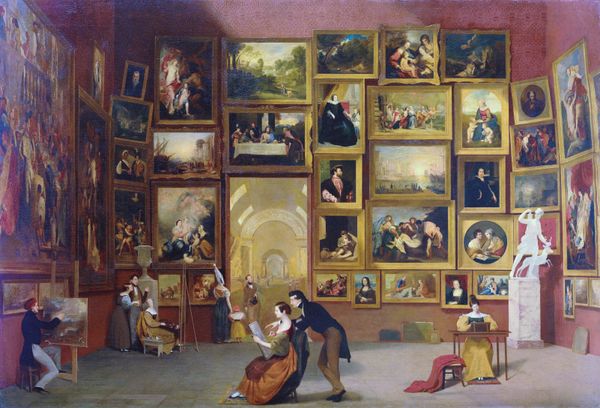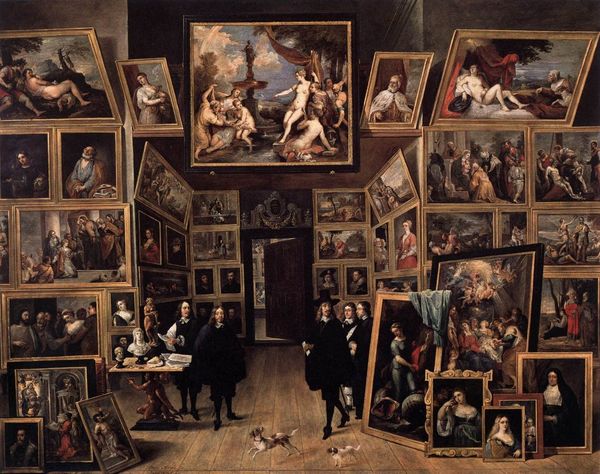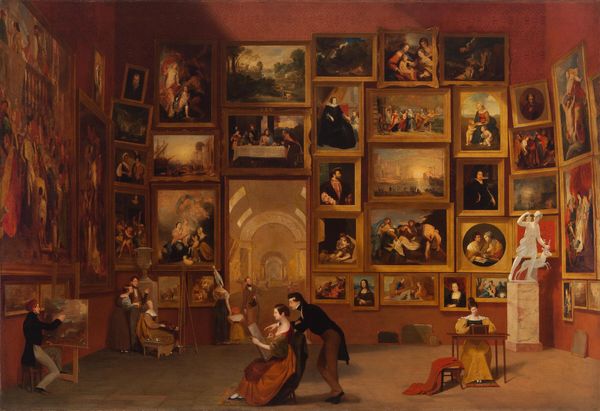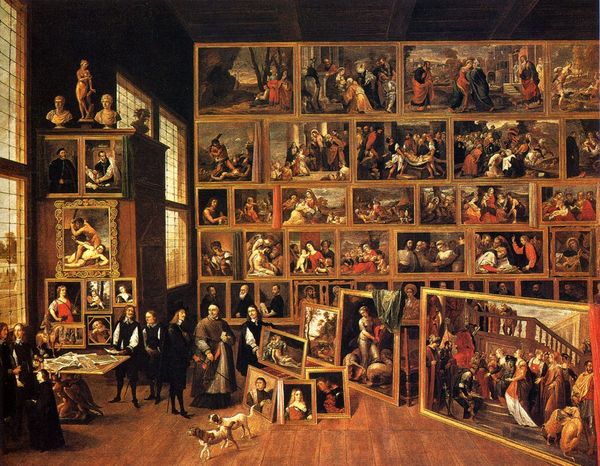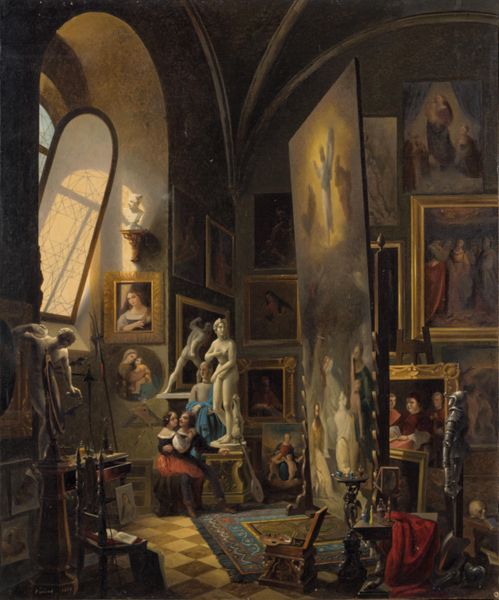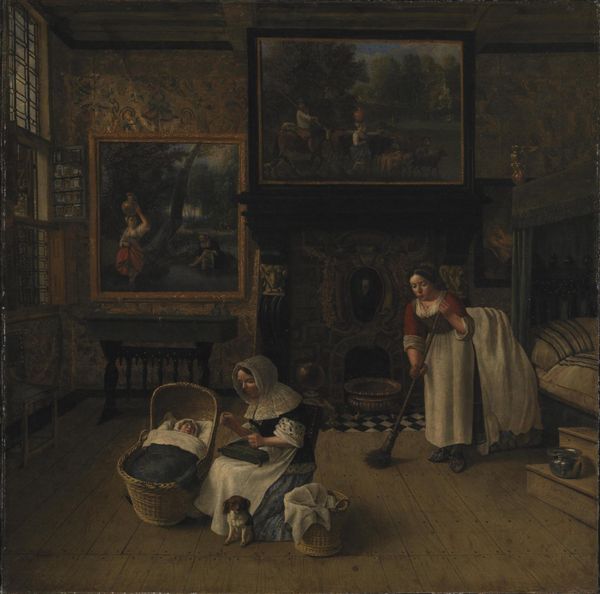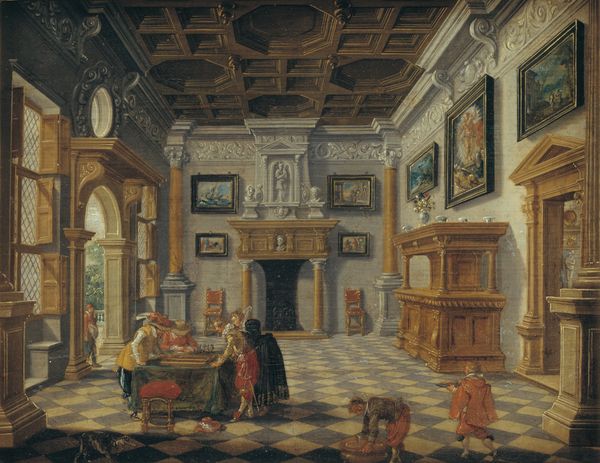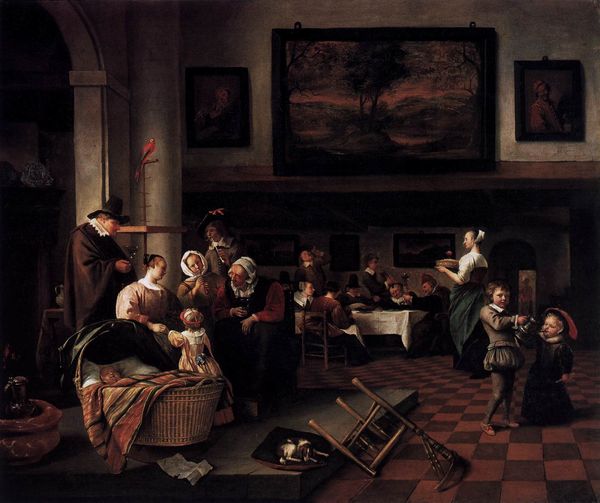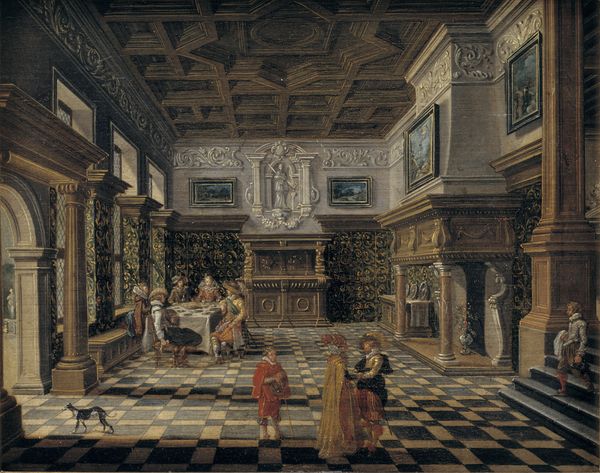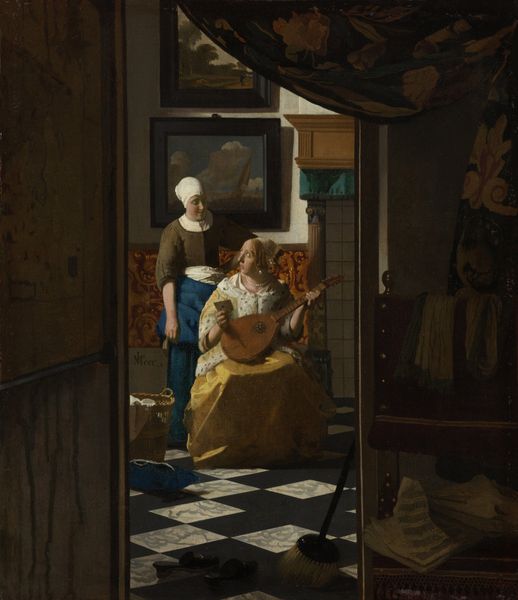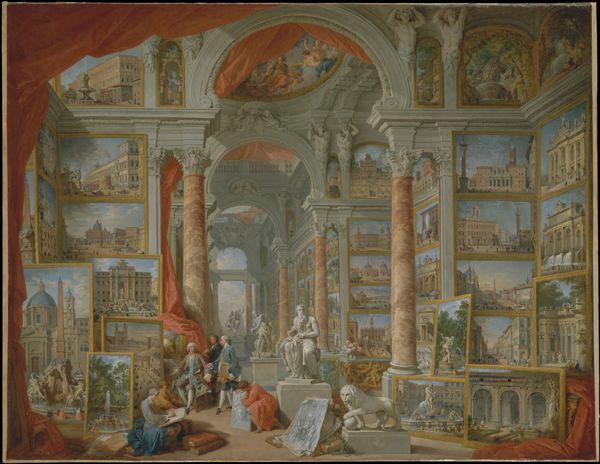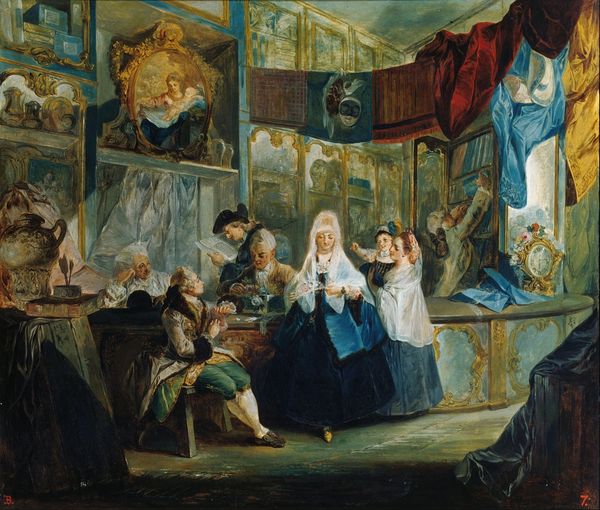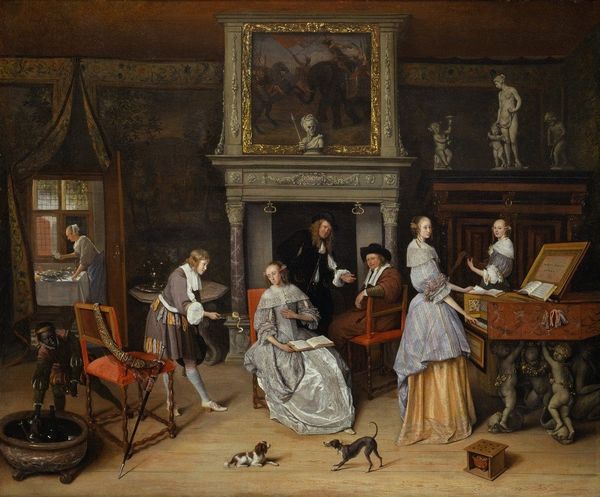
A Picture Gallery with an Artist Painting a Woman and a Girl. Allegory of the Art of Painting 1660s
0:00
0:00
oil-paint
#
portrait
#
allegory
#
baroque
#
dutch-golden-age
#
oil-paint
#
oil painting
#
genre-painting
#
history-painting
Dimensions: 97.5 cm (height) x 137 cm (width) (Netto), 112.6 cm (height) x 151.8 cm (width) x 9.9 cm (depth) (Brutto)
Curator: This piece, attributed to Gillis van Tilborgh and created in the 1660s, is entitled "A Picture Gallery with an Artist Painting a Woman and a Girl. Allegory of the Art of Painting." It’s an oil painting currently residing here at the SMK. Editor: The air in that room feels thick, heavy with linseed oil and the quiet intensity of creation. So many paintings crammed into one space - it’s almost claustrophobic but also intensely creative, don't you think? Curator: Indeed. What intrigues me is the concept of artistic production presented here. Consider the labour – the pigments, the canvas, the workshop. Each portrait on the wall is evidence of skilled work. What this implies about patronage and artistic value during that era is really interesting. Editor: The little monkey on a leash adds this playful counterpoint! It suggests that there might be imitations happening even as new things are being made—art mimicking life or artists trying to keep up with art—chasing their tails to produce. And you see the subject isn't lost. Curator: A fine detail, indeed. One should consider also the social context of the subjects, particularly of women in the arts, often seen only as passive subjects rather than active participants in the artmaking, an aspect to remember for later appreciation. Editor: It speaks of a life in art. Look, I can smell the wax, the oiled wood! Van Tilborgh seems intent on capturing more than just faces – capturing the very essence of artistry, of seeing. It’s very intimate for a public work, as it includes everyday details but makes great comments. Curator: Yes, and with that layered reading, a closer consideration might really change the way in which you read artworks as well, adding in those human elements that make even just objects more interesting Editor: Well said. Perhaps on the way out, we'll swing through a different era to see how painting changes through the years. A good lesson, and a good work of art, deserves another conversation another time.
Comments
statensmuseumforkunst almost 2 years ago
⋮
The small monkey in the foreground is an allegory of the art of painting. In the Christian Medieval era monkeys symbolised foolishness, sin, and thoughtless "aping." Over the course of the 15th century imi tation came to be regarded in a more positive light, and images of monkey painters began to denote the skilful representation of nature. In the 17th century the rich and noble collected exotic animals. Monkeys from every corner of the world were well known to artists, and the one featured in the painting could have hailed from Africa, Asia, or America. What we see is an imaginary space. The walls are hung with paintings typical of Dutch and Flemish art in the 17th century. The monkey's presence com ments on the artist's work on a portrait, but also on the role of art in general. Representing reality with skill requires both clever aping and attention to de tail, as is emphasised by the telescope. Or perhaps art is just a comical, one-eyed, and myopic pursuit?
Join the conversation
Join millions of artists and users on Artera today and experience the ultimate creative platform.
statensmuseumforkunst almost 2 years ago
⋮
The scene takes place in a gallery or an art dealer’s shop. Paintings crowd the walls, and precious objects are displayed on the table: a Chinese lidded jar, statues, a mounted nautilus shell and more. At the centre of this collection Gillis van Tilborgh has placed a painter depicting a woman and her young daughter holding a dish of red, blue and yellow colours. Artists sought to outdo the indescribable beauty of nature – such as its splendid flowers – with their imitations on canvas. Hence, this painting has been interpreted as an allegory of the art of painting. The monkey with the telescope may symbolise nature aping nature, or perhaps it symbolises the one sense that is truly indispensible for a painter: sight.
